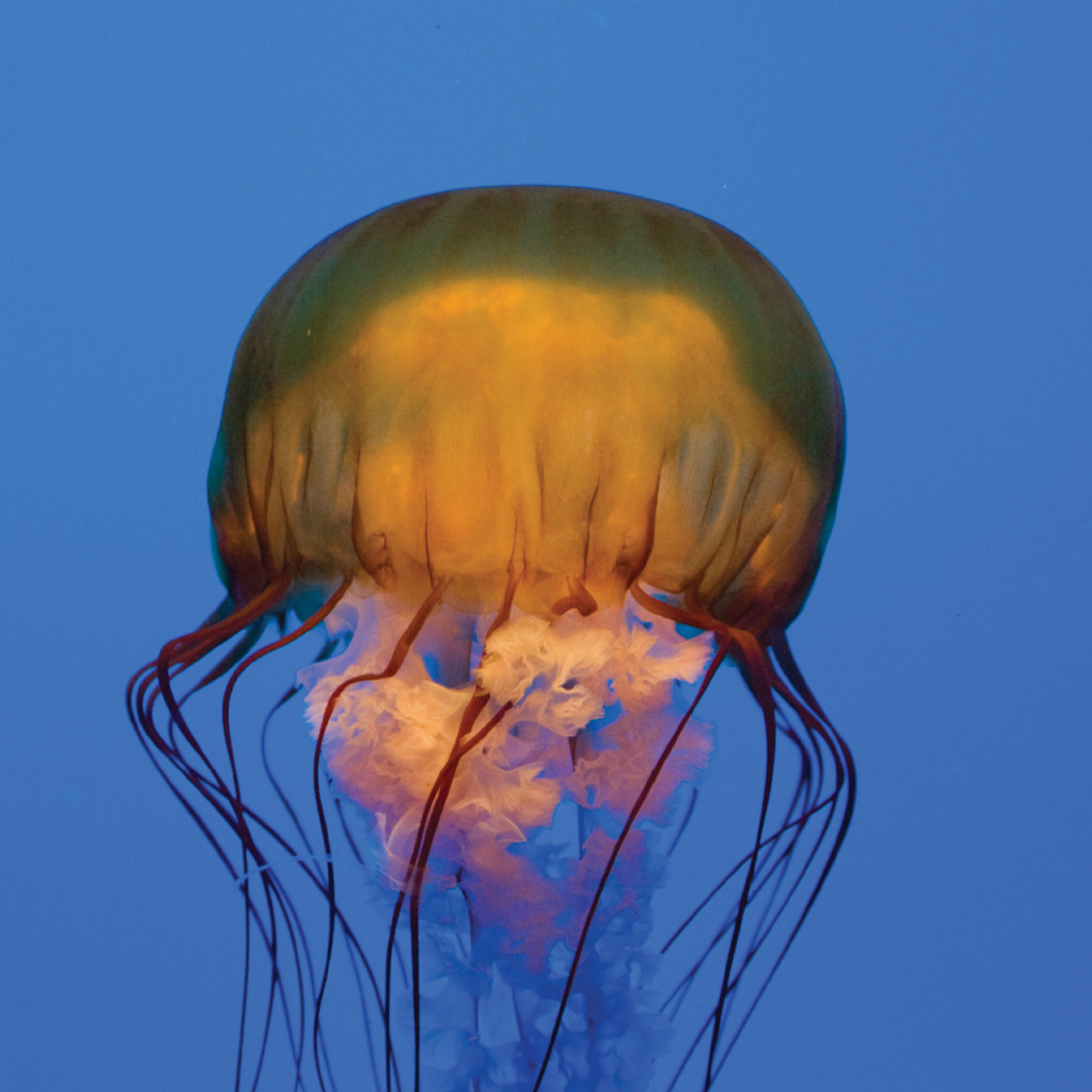Bioluminescence is everywhere on earth—most of all in the ocean, from angler fish in the depths to the flashing of dinoflagellates at the surface. Woody Hastings explores the natural history, evolution, and biochemistry of the diverse array of organisms that emit light.
While some bacteria, mushrooms, and invertebrates, as well as fish, are bioluminescent, other vertebrates and plants are not. The sporadic distribution and paucity of luminous forms calls for explanation, as does the fact that unrelated groups evolved completely different biochemical pathways to luminescence. Prof. Hastings explores the hypothesis that many different luciferase systems arose in the early evolution of life because of their ability to remove oxygen, which was toxic to life when it first appeared on earth. As oxygen became abundant and bioluminescence was no longer adequate for oxygen removal, other antioxidant mechanisms evolved and most luminous species became extinct. Those light-emitting species that avoided extinction evolved uses with survival value for the light itself. Today’s luminous organisms use bioluminescence for defense from predators, for their own predatory purposes, or for communication in sexual courtship.
Bioluminescence was earlier viewed as a fascinating feature of the living world, but one whose study seemed unlikely to contribute in any practical way. Today, bioluminescence is no longer an esoteric area of research. Applications are numerous, ranging from the rapid detection of microbial contamination in beef and water, to finding the location of cancer cells, to working out circuitry in the brain.
Harvard Prof. J. (Woody) Woodland Hastings
Prof. Hastings is a leader in the field of photobiology, especially bioluminescence, and is one of the founders of the field of circadian biology (the study of circadian rhythms, or the sleep-wake cycle). He is the Paul C. Mangelsdorf Professor of Natural Sciences and Professor of Molecular and Cellular Biology at Harvard University. He has published over 400 papers and co-edited three books.
Prof. Hastings research on bioluminescence has principally focused on bacterial luminescence (over 150 papers) and dinoflagellates (over 80 papers). In addition to bacteria and dinoflagellates, he, with his students and colleagues, has published papers on the biochemical and molecular mechanisms of light production in fungi, cnidarians, ctenophores, polychaetes, insects (fireflies and dipterans), ostracod crustaceans, millipedes, tunicates, and fishes with bacterial light organs. His laboratory produced the first evidence for quorum sensing in bacteria, early evidence of the molecular mechanisms of circadian clock regulation in organisms (first using dinoflagellate luminescence and then expanded to other cellular proteins), and some of the initial studies of energy transfer in green fluorescent proteins (GFP) in cnidarian luminescence
Event Details
The Chicago Council on Science and Technology and the Harvard Club of Chicago present
Bioluminescence: Living Lights, Lights for Living
with Harvard Prof. J. (Woody) Woodland Hastings
When: Thursday, February 21, 2013
Registration & Reception – 5:30pm; Presentation – 6:00pm.Please Register below.
Where:McDermot, Will & Emery (ID required for entrance to the building), 227 W. Monroe, Chicago
Fees: Complimentary for C2ST members / $30 for Non-members / $5 for Students
Register at C2ST’s event registration site
To learn more about Prof. Hastings click here.
This event is being presented jointly with the Harvard Club of Chicago. Visit their website at http://www.harvardclubchicago.org/
